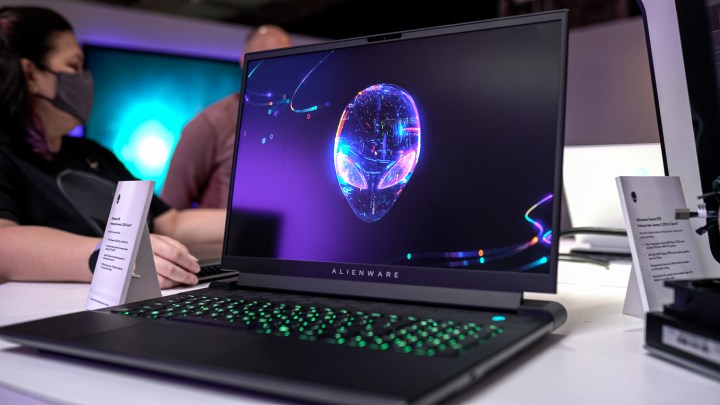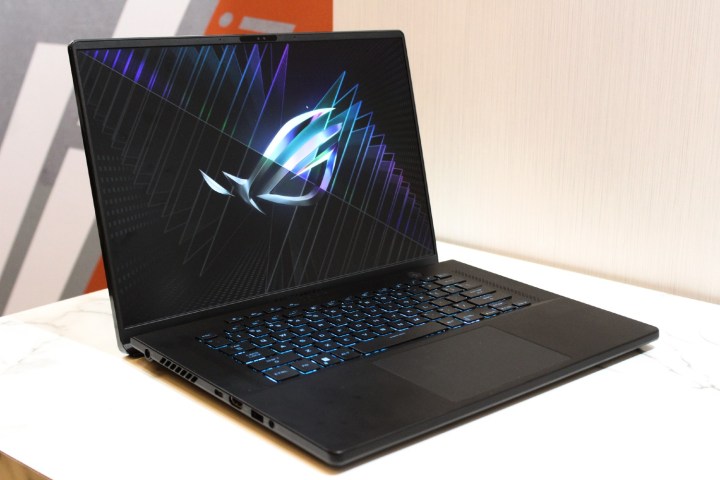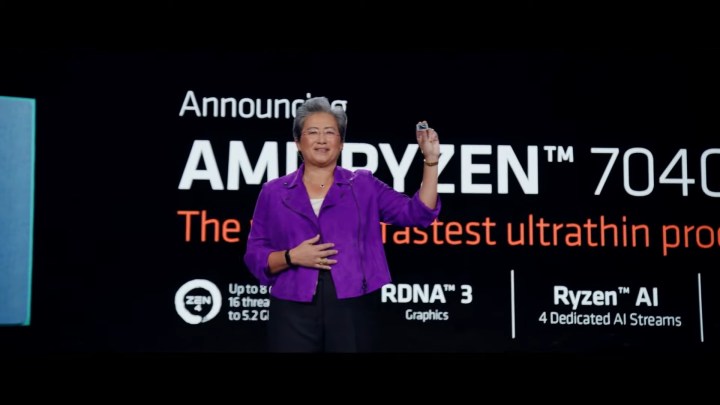CES is a laptop-heavy show, with dozens of new models getting announced each year. Emerging from all the best of those new laptops from CES 2023 are some exciting trends in design, performance, and technology that are going to have a huge influence throughout the rest of this year.
Bigger is better?

Big laptops made their mark at CES this year. Many of the major laptop manufacturers brought an 18-inch gaming laptop to the show, including Asus, Acer, Dell, and Razer. Some of these monsters are absolutely massive, such as the Alienware m18, which weighs over 9 pounds. Others, like the Razer Blade 18, are a bit more subtle.
Still, these are large laptops that come powered by the highest-end components. with plenty of space in the box for airflow.
The transition to 16:10 is a big reason for the move to 18-inch laptops. While 16:10 has been popular in the laptop space for years now, the transition for gaming laptops was cemented at CES 2023, with big-name laptops like the Alienware x16 and Razer Blade 16 leaving 16:9 behind. Naturally, that leaves open a spot for a larger 16:10 model, and that’s where these new 18-inch laptops come in. You just may need a larger backpack if you hope to lug one of these beasts around.
HDR on PCs is about to get real

I was wowed by the proliferation of mini-LED and OLED panels this year. Everywhere you look, flagship laptops and monitors are leaving IPS LED displays for these more advanced forms of backlighting. Some of the new LG Gram laptops went OLED for the first time, as did nearly every Asus laptop (including some very affordable midrange options).
The biggest growth, though, has been in gaming laptops. Razer, Asus, and Acer all had 240Hz 1600p mini-LED gaming laptops that are capable of 1,000 nits of peak brightness — many of them made our list of the best gaming laptops of CES 2023 — which should really transform the HDR gaming performance of these laptops. MSI even had a 4K 144Hz mini-LED model with its Titan GT77 HX.
The one exception from the list is Dell, which has resisted the trend for one reason or another. Despite having debuted one of the most exciting OLED gaming monitors last year with the Alienware 34 QD-OLED, the company came empty-handed in this regard this year — though I doubt it’ll still that way for very long as the race to increase display quality continues.
AMD’s momentum stutters

AMD’s been on a slow but steady fight against Intel in the laptop space over the past couple of years. But from what I saw at CES this year, its momentum seems to have stalled. Rather than more design wins for AMD, a number of popular laptop models removed AMD from its lineups, both on the CPU and GPU fronts.
The biggest example of this is the new ROG Zephyrus G14. This supremely popular gaming laptop has been an all-AMD device since its inception, showcasing the latest of AMD’s CPU and GPU technology each year. But this year’s model, at least so far, has replaced AMD graphics with Nvidia graphics. Perhaps the allure of putting an RTX 4090 in a 14-inch laptop was too much to resist.
Another example is in Lenovo’s laptop lineup, which has been a success for AMD in the past couple of years. But many of the newest devices have made their debut with Intel instead. Even the Legion gaming laptops, which Lenovo says will eventually get AMD models, only had Intel-powered devices on display.
While AMD continues to have success with its desktop components, Intel has shown this year that it hasn’t taken the competition lightly on the laptop front. We don’t get to hear the internal conversations that happen when a manufacturer like Asus or Lenovo decides to choose Intel or AMD, but Intel has clearly done what is necessary to show its domination given the proliferation of its 13th-gen mobile chips.
Editors’ Recommendations





